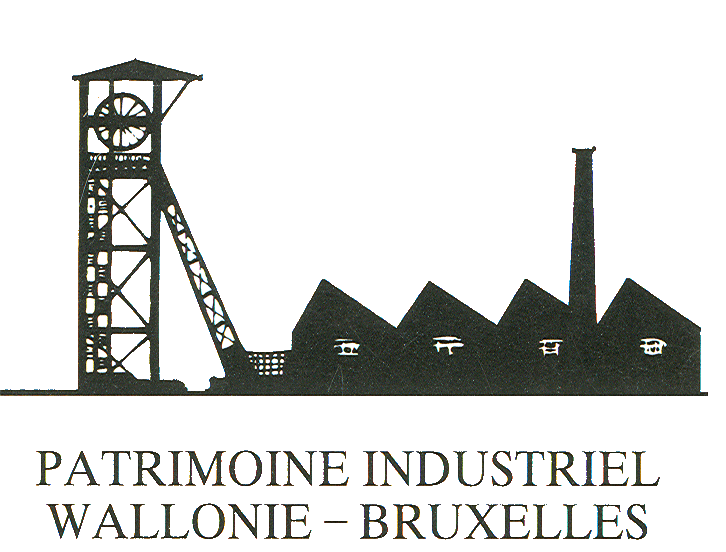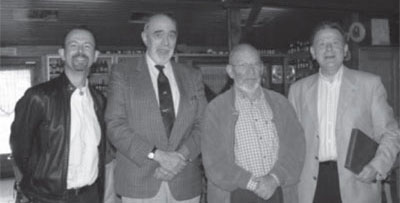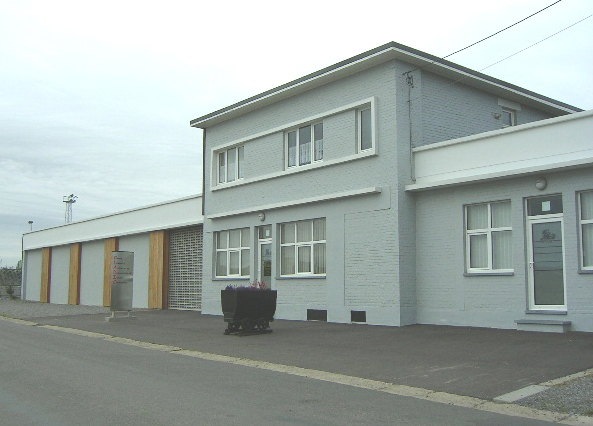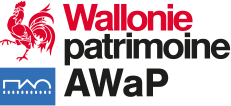PATRIMOINE INDUSTRIEL WALLONIE-BRUXELLES asbl
Introduction
The Origins of P.I.W.B. : highlights
Until the 1960s, the majority of even the most enlightened of Belgium’s opinion leaders were barely aware of the historic value of the material remains of the industrial past. There were, of course, some happy exceptions, such as the rescuers of the Grand Hornu site, the promoters of the future Liège iron and coal museum, and isolated amateurs and researchers, such as René Evrard in Liège and Georges van den Abeelen in Brussels. A great deal is owed to them, for they foresaw that, under the repeated hammer-blows of technological progress and economic change, the businesses that grew out of the Industrial Revolution would undergo profound changes, or even disappear. Now, the time was right for more systematic rescue procedures, for other countries were already showing the way, such as the United Kingdom (praise where praise is due!) with the Ironbridge complex, and Sweden and Germany.
In 1973, Georges van den Abeelen created the "Centre d'archéologie industrielle" (Industrial Archaeology Centre) where the exhibition "L'homme et la machine" (Man and Machine) held in Brussels two years later, was to trigger real interest in the subject in Belgium, supported by historians and archaeologists who came from other arenas, but were oriented towards this new field of investigation, including Marinette Bruwier, Jacques Stiennon, Luc-Francis Génicot, and others who, much earlier, had touched on the subject almost without realising it – but very well – rather like Mr. Jourdain speaking prose. 1978 saw the birth in Flanders of the “Vlaamse Vereeniging voor Industriële Archeologie” (the V.V.I.A.), led by young, dynamic individuals who were totally dedicated to this little-known area. The result of this initiative was quite quick, for the Dutch-speaking association was soon to play a major part on the national stage and eventually found itself representing the whole of Belgium, even though it had initially been founded to illustrate the contribution of Flanders to industrial archaeology. A strange paradox considering that this region came to industrialisation quite late, unlike Wallonia, which came second only to England. Meanwhile, a world industrial archaeology association, the TICCIH, had been founded in Sweden, in 1978. Since then it has been the top authority in this sector and regularly holds international conferences, one of which was jointly organised with PIWB in Belgium in 1990.
 |
 |
The ‘70s were clearly marked by an extraordinary burgeoning of research, projects and reports on industrial heritage. From then on, rescue and rehabilitation were firmly on the agenda – occasionally neglecting the need for choices, funding and long-term feasibility. However this may be, French-speaking Belgium had to claim its place in the context of on-going federalisation and out of simple respect for its historic identity, where industry has played such a large part. Thus, encouraged and supported by the Executive of the French Community, the non-profit association “Patrimoine Industriel Wallonie-Bruxelles” was founded on 22nd February 1984; I had the honour of chairing it from the outset, and of holding this post throughout the first ten years of its existence. The thirty-four founder members were driven by the same wish, based on both scientific concerns and issues of identity, to defend and promote their community’s industrial heritage. A liaison bulletin, “Industrial Heritage”, was set up the same year. After first modest “desk top” edition, No. 2 was a proper printed version. Almost a quarter of a century later, this journal is still making a valued contribution to its field. Articles, reports, accounts, and brief news items provide members and others with reliable information and, it is hoped, a stimulant for their particular areas of interest.
Again in 1984, the Belgian section of the TICCIH, “TICCIH Belgium”, was set up, this time by balancing the new P.I.W.B. with the older V.V.I.A.
 |
The PIWB had a lot to do, as its area of interest was new at that time. The major sites that had been rehabilitated had to be promoted, while the preservation of those where this was still an option had to be encouraged. It also had to run an association covering a very wide area and requiring the Board to do a great deal of travelling, both to diversify its meeting places and to take in differing local realities. In 1987, these trips were extended to the members themselves, enabling them to visit the various sites of interest during organised excursions within Belgium and, from 1991, in neighbouring countries. Travelling exhibitions were also set up (in 1985 and 1986), as well as conferences, in particular on the conversion of industrial sites in cooperation with the Société Royale Belge des Ingénieurs et des Industriels (1987), not to mention the international congress of the TICCIH in 1990. Formal contacts were made with the industrial archaeology services of the Grand Duchy of Luxembourg. P.I.W.B. also took part, in 1994, in the Walloon Region Heritage Days, focusing on industrial archaeology.
Finally, frequent contacts were made with public representatives with the aim of raising awareness, in addition to the continuous dialogue with Belgium’s French-speaking Community. The Ministry for Regional Development asked the association to compile an inventory of Walloon industrial sites, a project which was carried out between 1991 and 1993, although other authorities subsequently completed it in their own names. In fact, the question was already arising of choice in the intervention of the public authorities in matters of rehabilitation. Meanwhile, the very concept of industrial archaeology was expanding considerably, calling for vigilance extended to other fields - ancestral technologies and proto-industries, tangible as well as intangible heritage, oral history, etc.
 |
|
The four presidents of "Patrimoine industriel Wallonie-Bruxelles". From left to right : Jean-Louis Delaet, Bruno Van Mol, Jean Defer and Claude Gaier. (c) Claude Depauw, 2007. |
The creation and beginnings of PIWB were, for me, an exciting experience, shared with administrators – some of whom, alas, are no longer with us – and members who were often highly motivated. I can modestly say that I feel I have made a contribution on one hand to knowledge of a historical phenomenon which I see as one of the most important in human development - the Industrial Revolution - and, on the other, to strengthening the French-speaking identity in Belgium (and not exclusively) and finally promoting the image of this community and of Belgium abroad. As Cicero said, “jucundi acti labores” - “happy is he whose work is done”. But is it ever all done? My successor, Jean Defer, and those who came after him, have taken on other tasks, other challenges, in a changing context. But that’s another story…
|
Claude GAIER |
Addresses
- Jean-Louis DELAET,
President - Le Bois du Cazier
Rue du Cazier, 80
B-6001 MARCINELLE (Belgium)
Tel. : 0(032) 71 88 08 56
Fax : 0(032) 71 88 08 57 - wyqrynrg+cngevzbvarvaqhfgevry+or
- Jacques CRUL,
Secretary & Treasurer - rue Lambert Marlet, 23
B-4670 BLEGNY
w.pehy+oyrtalzvar+or
Library
|
The Association Library can be consulted at the Liege Archives and Documentation Centre of the Coal Industry (CLADIC). vasb+cngevzbvarvaqhfgevry+or
|
 |
Our partners
 |
The Ministry for the French-speaking Community of Wallonia-Brussels |
 |
The Walloon heritage agency |
Board of Directors
- President :
- Jean-Louis DELAET
- Vice Presidents :
- Claude MICHAUX
- Secretary & Treasurer :
- Jacques CRUL
- Members :
- Gilles DURVAUX
- Lon PERSICH
- Joëlle PETIT
- Chloé PIRSON
- Isabelle SIRJACOBS
- Bruno VAN MOL
- Anne-Sophe WALAZYC
- Maryse WILLEMS
Contact and Membership
Contact
For more information or details of our association, our activities, our publications and our documents, please fill in the form, selecting “Demande d’informations”, and we’ll let you have our reply as soon as possible.
Membership
If you would like to join our association, just send an application to the Board of Directors, either by post to one of the addresses given here or using the form below, selecting the line “Demande d’affiliation”.
Once your application has been accepted, you will be asked to pay an annual fee (which includes a copy of the magazine "Des usines et des hommes") of :
-
€30 for individual membership
-
€60 in the case of an association
-
€120 if you are a commercial company
Payments should be made into Account No. BE26 0682 0199 3029 | BIC : GKCCBEBB, quoting your details.

